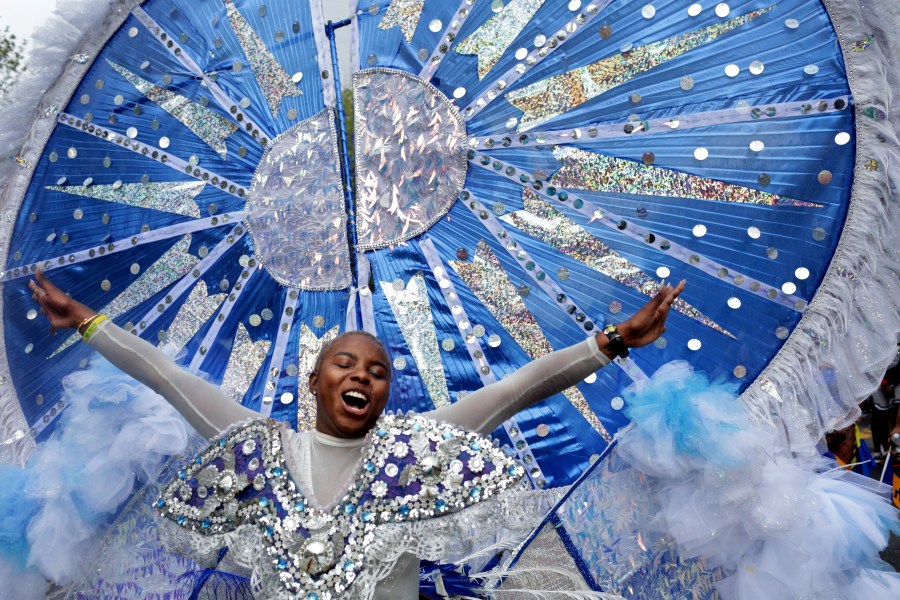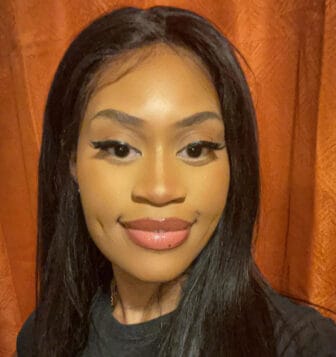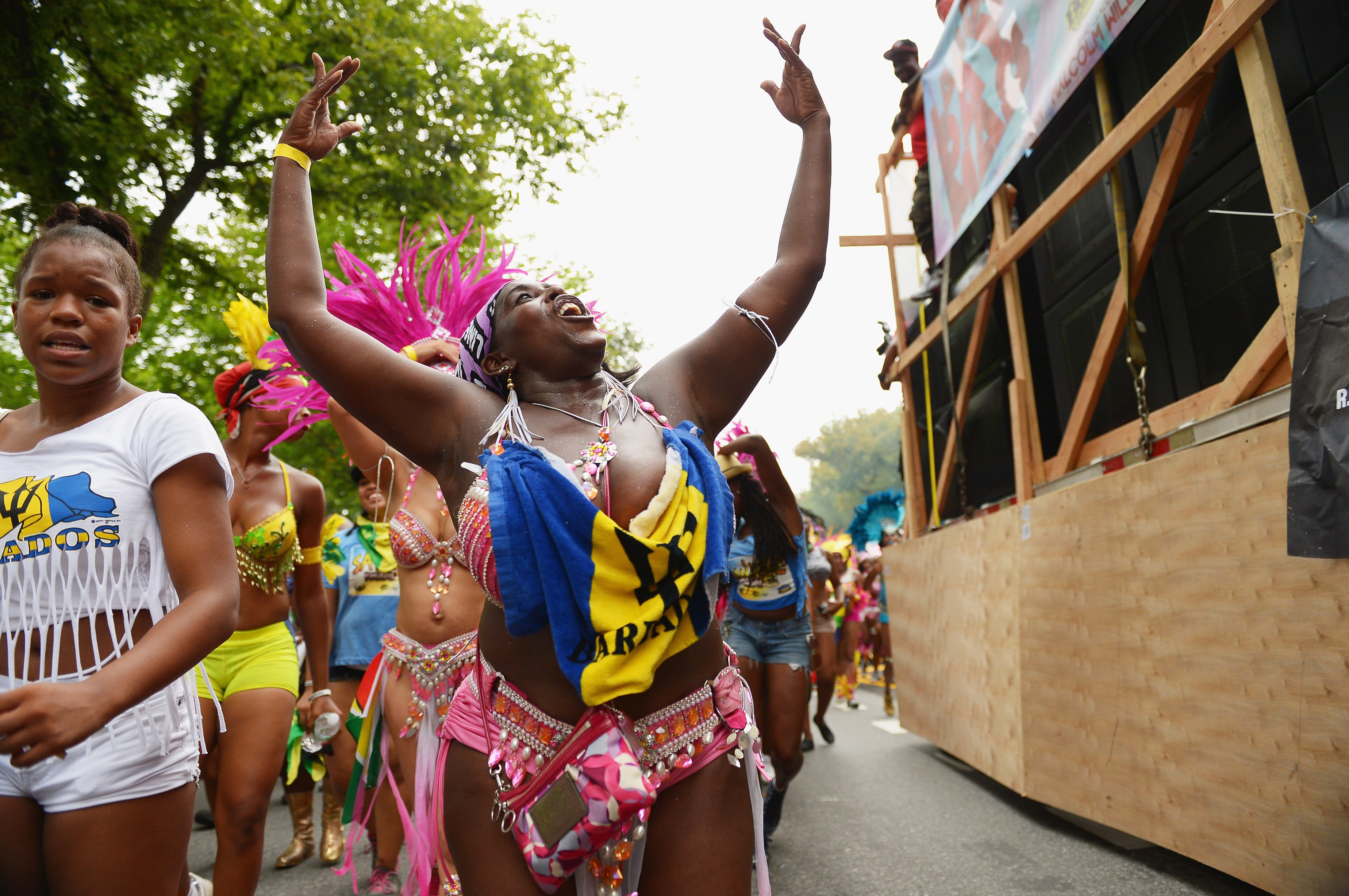Caribbean traditions find new life each Labor Day at the West Indian Day Parade
Treasured carnival traditions derived from Caribbean history now appear at New York's annual West Indian Labor Day Parade.
Labor Day weekend in the United States is one of the most celebratory times of the year, a holiday that honors the labor force in the U.S. but is simultaneously a symbolic ode to the end of summer. It is also a celebration of the many cultures that have shaped this nation, particularly in New York City, where West Indian heritage takes the forefront of the weekend. Showing the world how to celebrate freedom, defiance, determination, success, and the benefits of the labor bestowed upon this nation, the annual West Indian Day Parade in Brooklyn’s Crown Heights neighborhood kicks off this year on Monday, September 4, at 11 a.m.

The West Indian Day Parade is an annual celebration of Caribbean culture held each Labor Day. Now celebrating its 56th anniversary, the famed spectacle is a parade doused in triumph, honor, and liberation observed by people of Caribbean descent. Beginning at Rochester Avenue in Crown Heights and moving along Eastern Parkway, the floats, performers, and revelers’ procession culminates at the Brooklyn Museum.
Throughout the day, approximately four million spectators and carnival players come together to praise West Indian culture and Caribbean descendants’ contributions to this nation by reveling in the streets. Mimicking the atmosphere of carnivals across the Caribbean, attendees can be seen in full masquerade, bearing feather backpacks, masks, and Caribbean flags, while enjoying steel pan drum contests, soca, reggae, dancehall, dennery, live music performances, street dancing, food and ultimately, living proudly out loud, having fun.
President Grover Cleveland signed Labor Day into law as a holiday on June 28th, 1894, and has since historically been observed on the first Monday of September. Before this annual celebration of workers and their achievements in the U.S., labor unions formed in the late 18th century to protest the heinous conditions of the American labor factories, mills, and mines vital to industrialization. Adults and children alike were forced to work 12-hour days, seven days a week, in unhealthy, dangerous, and often traumatic environments to scrape up a basic living.
As a result, labor unions gained popularity, organizing work stoppages (also known as strikes) and rallies in objection to poor conditions and low wages. One of the most famous rallies occurred on September 5, 1882, when 10,000 workers took unpaid time off to march in NYC’s Union Square. That event is now considered the first unofficial Labor Day.
However, well before the advent of labor unions, there was American chattel slavery, the centuries-long practice of forced labor and restricted liberty. Throughout the transatlantic slave trade, enslaved citizens in the Americas have always revolted for liberty, freedom, and justice for all. Along with revolutions, there were also organized festivals and marches on various Caribbean islands that served as celebrations of resilience for the uprooted and enslaved. Often taking place on the rare days the enslaved were given time off from forced labor, these gatherings represented freedom and defiance. Today, we see the elements of those early Caribbean carnivals during Labor Day weekend at the West Indian Day Parade and its colorful early morning pre-event, J’Ouvert.
In places like Barbados, the carnival festival known as Crop Over emerged as enslaved laborers celebrated their sugar cane harvest and the season’s hard work. As crops and resources were at their most fruitful, the workers celebrated and gave thanks on their plantations through song, dance, and food, wheeling the last of the season’s crop into the mill yard before burning the final cart, transformed into a twenty-foot tall effigy filled with cane trash and called “Mr. Harding.” The burning of the effigy represented an emblem of hope that tough times would be overcome.
Today, major aspects of Crop Over that show up at the West Indian Day Parade include performances by Bajan artists, elaborate costumes, and culturally specific foods like the flying fish sandwich that can be spotted all around Brooklyn during Labor Day Weekend.
The Bahamas’ Independence Day celebration on July 10th — a commemoration of sovereignty from British rule — commences with a series of festivals, dances, and performances throughout the week but comes to a head during a celebration called Junkanoo or Junkanoo Rushing. This event, dating back to the early 1900s, is celebrated as a grand parade where people spend all year preparing costumes, masks, stilts, floats, and entertainment to rush the streets all night with flamboyant dance and music performances, Bahamian flags, whistles, and food, celebrating well into the following afternoon.

The Bahamas is currently celebrating its 50th anniversary of independence, which people of Bahamian descent now extend to New York’s West Indian Day Parade. You can catch Bahamian flags, floats, and exuberant costumes at the West Indian Day Parade to celebrate Bahamian Independence and legacy.
Three Caribbean islands — St. Croix, St. Thomas, and St. John — are U.S. territories, better known as the U.S. Virgin Islands. So what better day to have a carnival celebration steeped in liberty and freedom than July 4th, the United States’ Independence Day? Carnival specifically takes place on the isle of St. John on July 4th every year, dating back to 1960. A second carnival happens on Emancipation Day, a local holiday commemorating the abolition of slavery.
The Virgin Islands’ carnival is similar to the West Indian Day Parade by way of its crownings of kings and queens of costume. It is also a family event where kids dress up alongside adults and partake in carnival contests and competitions. St. John is especially known for having live drum bands perform along their carnival route instead of recorded music, an element also seen at the West Indian Day Parade.

Trinidad and Grenada are two of the most prolific Caribbean islands that play Jab, an annual revolt against colonizers. Grenada is specifically known as the home to JabJab, a J’ouvert that kicks off Monday’s carnival celebrations in the most satirical way. Revelers will uniformly dress their bodies in black soot — historically mixed with some form of black engine oil or molasses or a mixture of charcoal and oil — with the horned helmets and chains that are Jab paraphernalia. Casket effigies, dolls, carts, drums, and conch shells also abound, while blood appears to drip from the leaders of the jab crew, also known as Capitals.
The word “J’ouvert” translates to “daybreak” in French Creole, while “Jab” refers to the devil. This is ultimately what the Jab uniform represents at both daybreak in Grenada and the West Indian Day parade, where J’ouvert begins around 4:00 a.m. before moving into the official carnival parade at 11:00 a.m. When Grenada’s enslaved people historically played Jab, they were mocking the white colonizers who encapsulated the real meaning of devilment by detaining and denying Africans their freedom. At the West Indian Day parade, those participating in Jab honor their ancestors and the long way we have come from enslavement.
While the West Indian Day Parade celebrates the incomparable labor and life Caribbean descendants have brought to this nation, it has become a catalyst for Caribbean carnivals across the United States, recognizing and shaping cultural customs in this nation. Today, Caribbean carnivals are a mainstay in the U.S., with places like Miami, Hollywood, Atlanta, Houston, Boston, and more holding Caribbean carnival parades.

Noel Cymone Walker is an NYC-based writer specializing in beauty, fashion, music, travel, and cultural anthropology. She has written and produced visuals for several notable publications such as The Recording Academy/The Grammys, The Fader, Billboard, OkayPlayer, Marie Claire, Glamour, Allure, Essence, Ebony, and more.
TheGrio is FREE on your TV via Apple TV, Amazon Fire, Roku, and Android TV. TheGrio’s Black Podcast Network is free too. Download theGrio mobile apps today! Listen to ‘Writing Black‘








